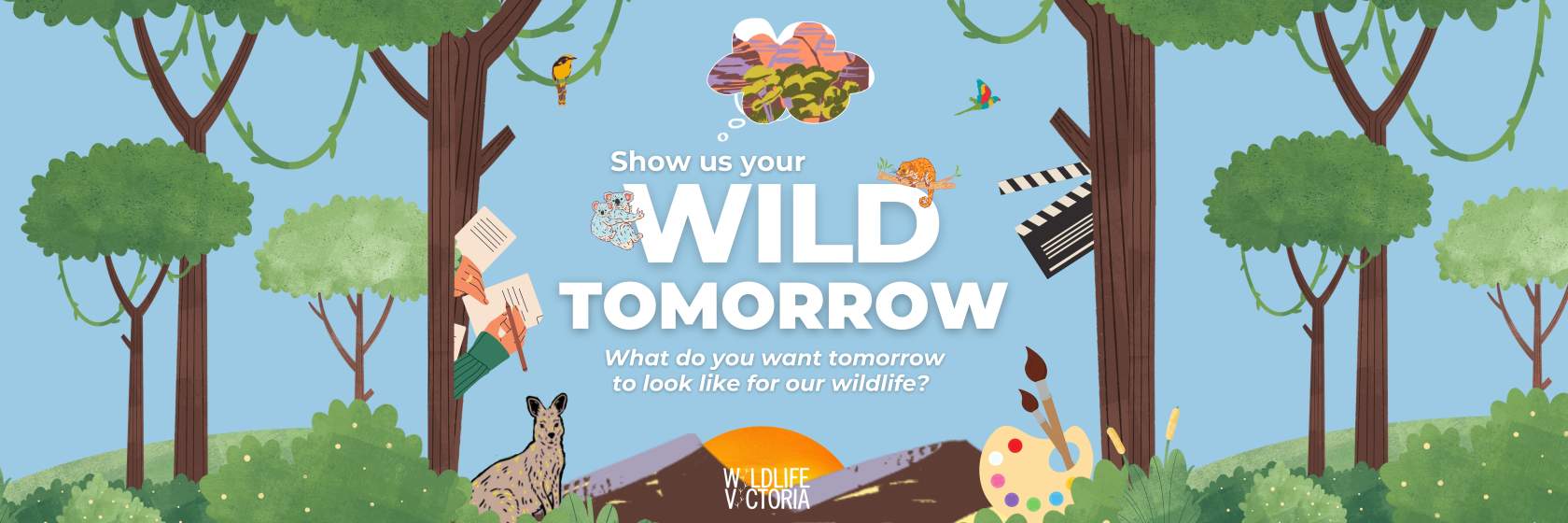
At Wildlife Victoria, we believe the future survival of our native wildlife is in our hands.
In an everchanging and tumultuous environment, we want young people to hold onto a world where nature can thrive and have the opportunity to inspire real change!
Over the past few months we’ve invited young people across Victoria to share their vision for a Wild Tomorrow - by any creative means they wanted. Through our educational resources, guided lessons from educators, stories from their families and just their wild imagination, those voices have spoken!
Thank You!
Thank you to everyone who submitted an entry and took part in the initiative - below, we invite you to read some of the words, and take in the images our future generations want us to see and hear.
We hope they inspire you and remind you that together, we can all work towards a wild tomorrow.
Wild Tomorrow Gallery
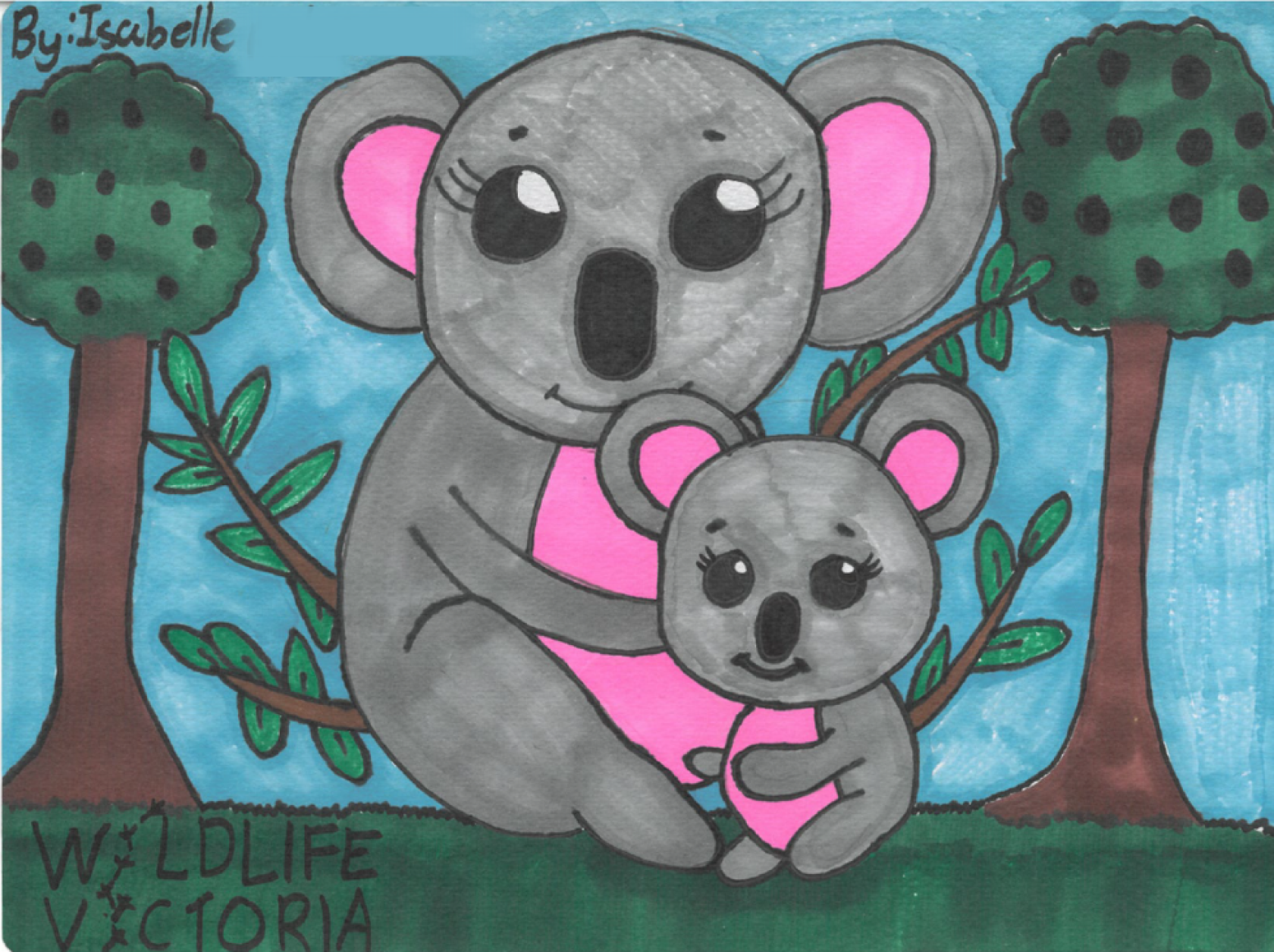
Isabelle, 8 years old.
Mum and Joey, 2025
Marker and pencil on watercolour paper
Introducing Isabelle’s vision of a Wild Tomorrow. A beautiful visual representation of the bond between mother and joey. Much like us, our koalas and other native species are all dedicated and caring parents to their young in the wild. Isabelle’s artwork reminds us how important it is to protect the future generations of our precious native animals, so our own loved ones can continue to enjoy them for generations to come.
Isabel, 8 years old.
Tomorrow without Mange, 2025
Animation using Scratch
Introducing Isabel’s (age 8) vision of a Wild Tomorrow – Tomorrow without mange. An impressive and creative animation showcasing a world where our wombats receive all the help they need and can live mange-free.
Mange is a highly contagious skin disease that has devastating effects on our native wildlife, particularly amongst wombats.
As Isabel’s animation shows, if caught in time, mange can be treated, and its effects reversed with the right help. Reports of sick, injured and displaced wombats are called into our Emergency Response Service every day; we work with Mange Management to help wombats suffering from mange.
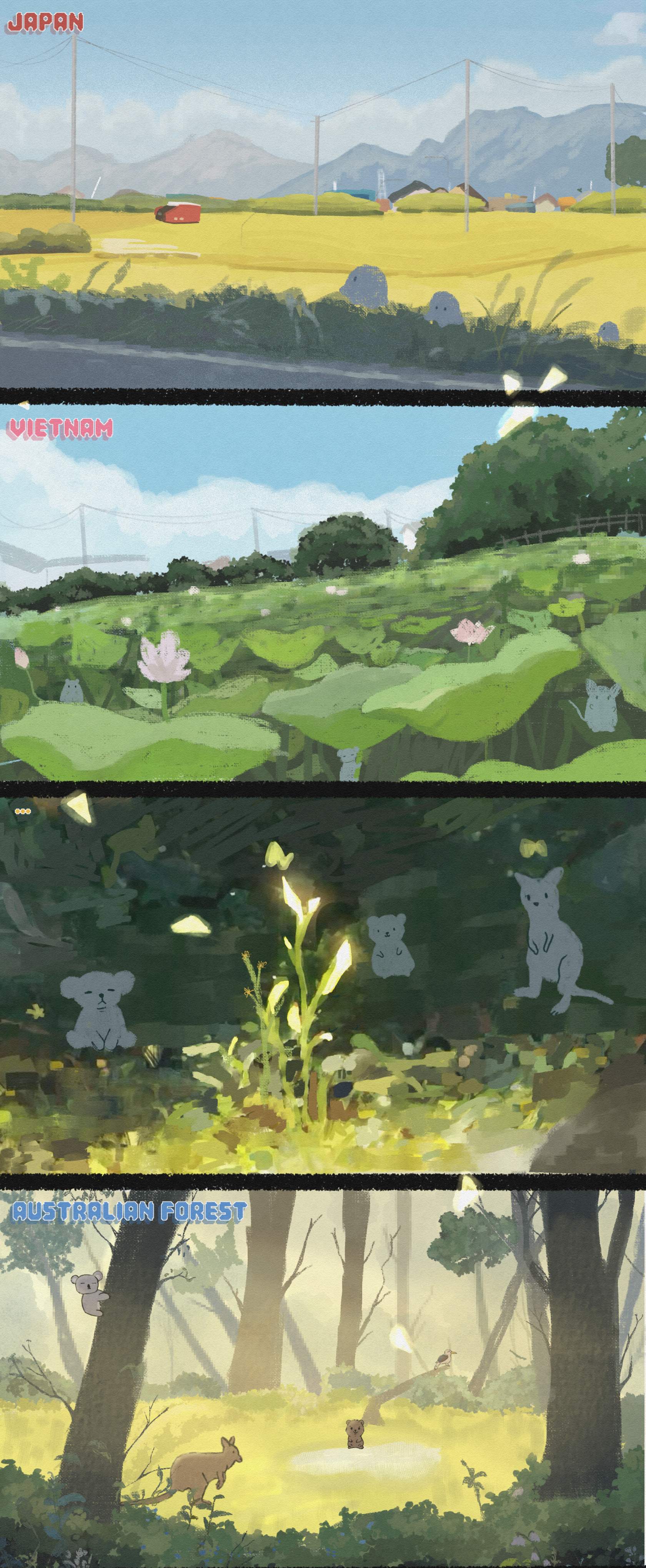
Mia, Year 7.
Shared Harmony, 2025
Paint on canvas
Mia shares a beautiful storyboard of harmony and collaboration in nature, inspired by Aboriginal Dreaming stories:
“My artwork consists of four related sketches arranged on one canvas. The first two scenes are set in different countries and show three little blob creatures travelling the world. As the journey progresses, these blobs gradually change into animals resembling native Australian wildlife. They eventually come across a mystical, glowing plant in a strange land. After that, this plant then sprouts into an Australian forest, that is home to a wide range of native flora and fauna.
In the third illustration, the magical plant is shown to be an acacia, a native Australian species that commonly found across the country. The final drawing depicts a forest filled with unique plants such as Correa alba and Eremophila; a native flower that thrives in open woodlands. Alongside the flora are animals like koalas, wallabies, quokkas, and a kookaburra. The blobs who were introduced earlier have now transformed into these animals; it symbolizes a journey of growth, connection, and change.
I made this artwork by being inspired by Aboriginal Dreaming stories; they are often shown with deep connections between people, animals, and the land. I wanted to share a peaceful story that commemorate the natural beauty of Australia while also highlighting the value of learning from other cultures. By including other countries, I want to show how shared knowledge from other, and different perspectives can help us grow and create a safe environment for the wildlife. Just as Australia, a multicultural country is shape by many cultures, my artwork shows that a wild tomorrow can be a place where people, plants, and animals live together in harmony.“
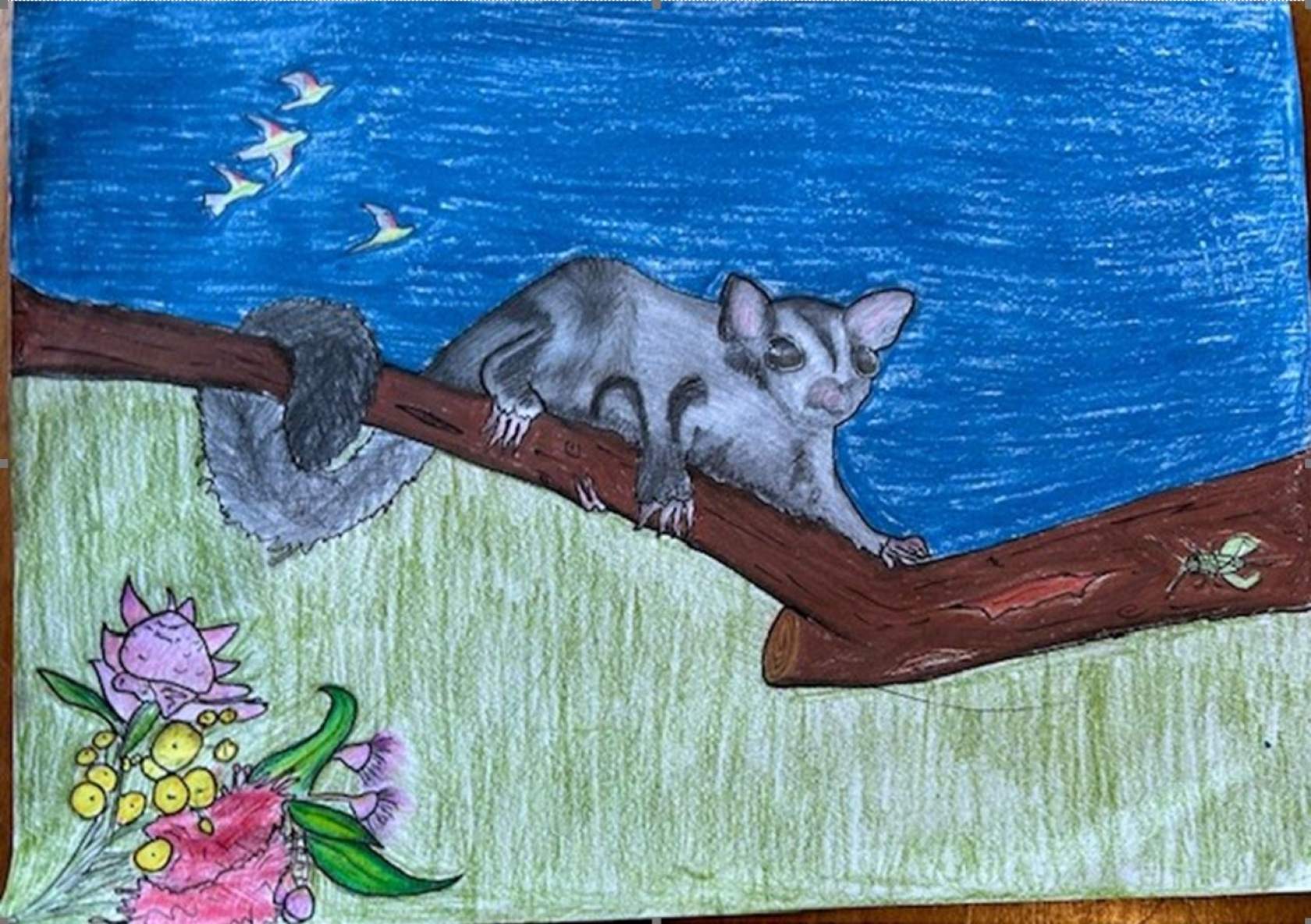
Luke, Year 7
Glider in the tree, 2025
Colouring pencil on paper.
Luke presents their view of a wild tomorrow as one where our threatened and vulnerable species can live safely in their native habitat - surrounded by native vegetation.
There are six different glider species in Victoria, all are increasingly vulnerable - with one species already listed as endangered. With increasing urban hazards such as unsafe fencing habitat and reduction of mature trees with suitable hollows for them to live in, their home becomes more challenging to survive in each day.

Felix, 7 years old.
Outback Attack, 2025
Marker and pencil on paper
Introducing Felix's vision of a Wild Tomorrow — Outback Attack! Where our beloved native animals come together for wild fun in their beautiful natural home. From kangaroo chaos to boisterous birds, Felix's imagination reminds us just how important it is to protect the places where our wildlife thrives for ourselves and our future generations.

Isaac, Year 7
A flash of gold, 2025
Poem with original artwork - colouring pencil on paper.
Isaac shares a beautiful illustration of the critically endangered helmeted honeyeater. Endemic to Victoria, this beautiful bird exists in very small poulations in the wild.
Isaac celebates the unique characteristics of the bird with hope for a future where its populations can grow once more with a helping hand.
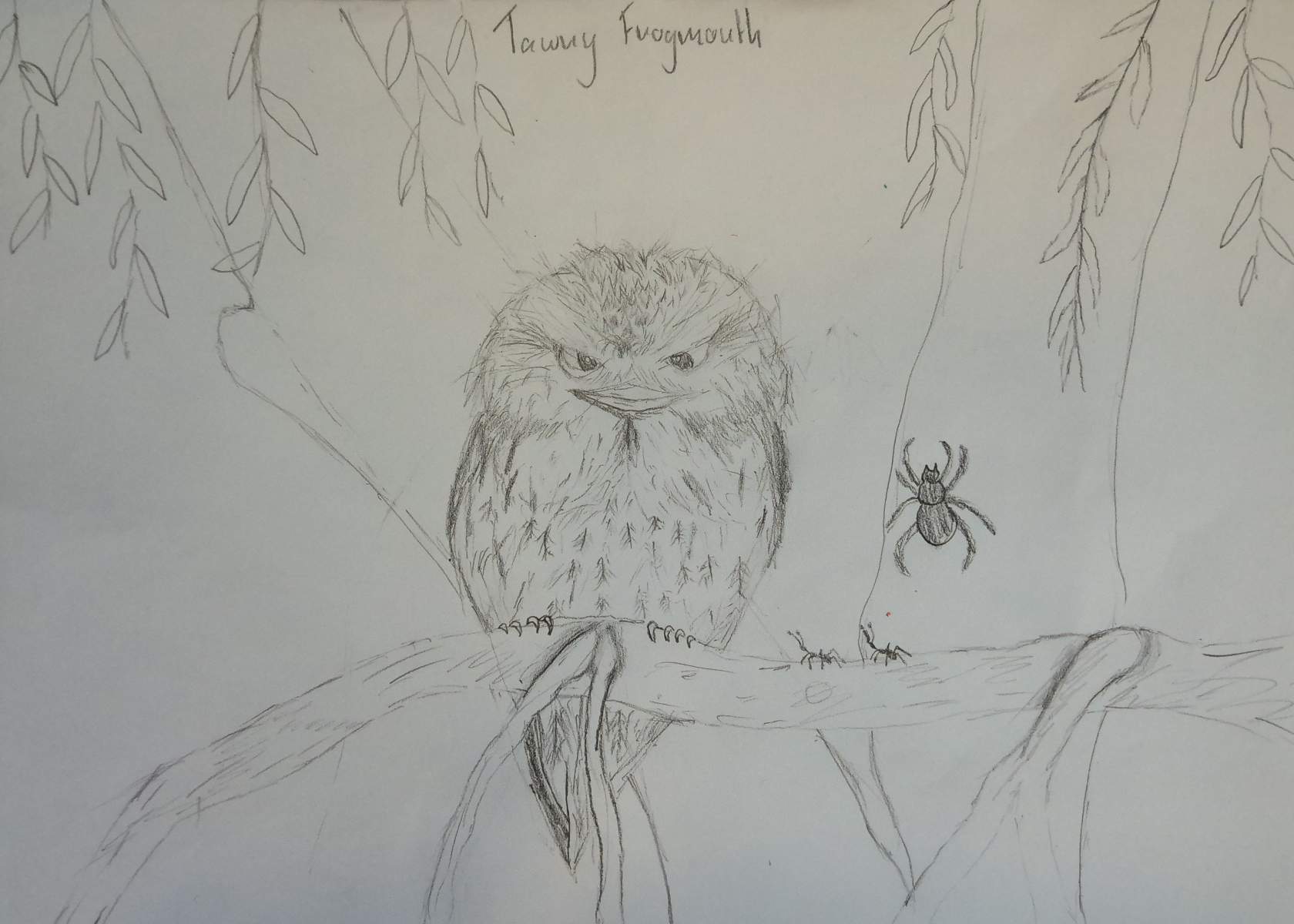
Somtojesus, Year 7
Tawny Frogmouth, 2025
Pencil on paper.
Somtojesus shares a beuatiful sketch of a tawny frogmouth in its natural habitat. Surrounded by invertebrate creatures, Somtojesus’s vision reminds us how important it is to protect all wildlife great or small.
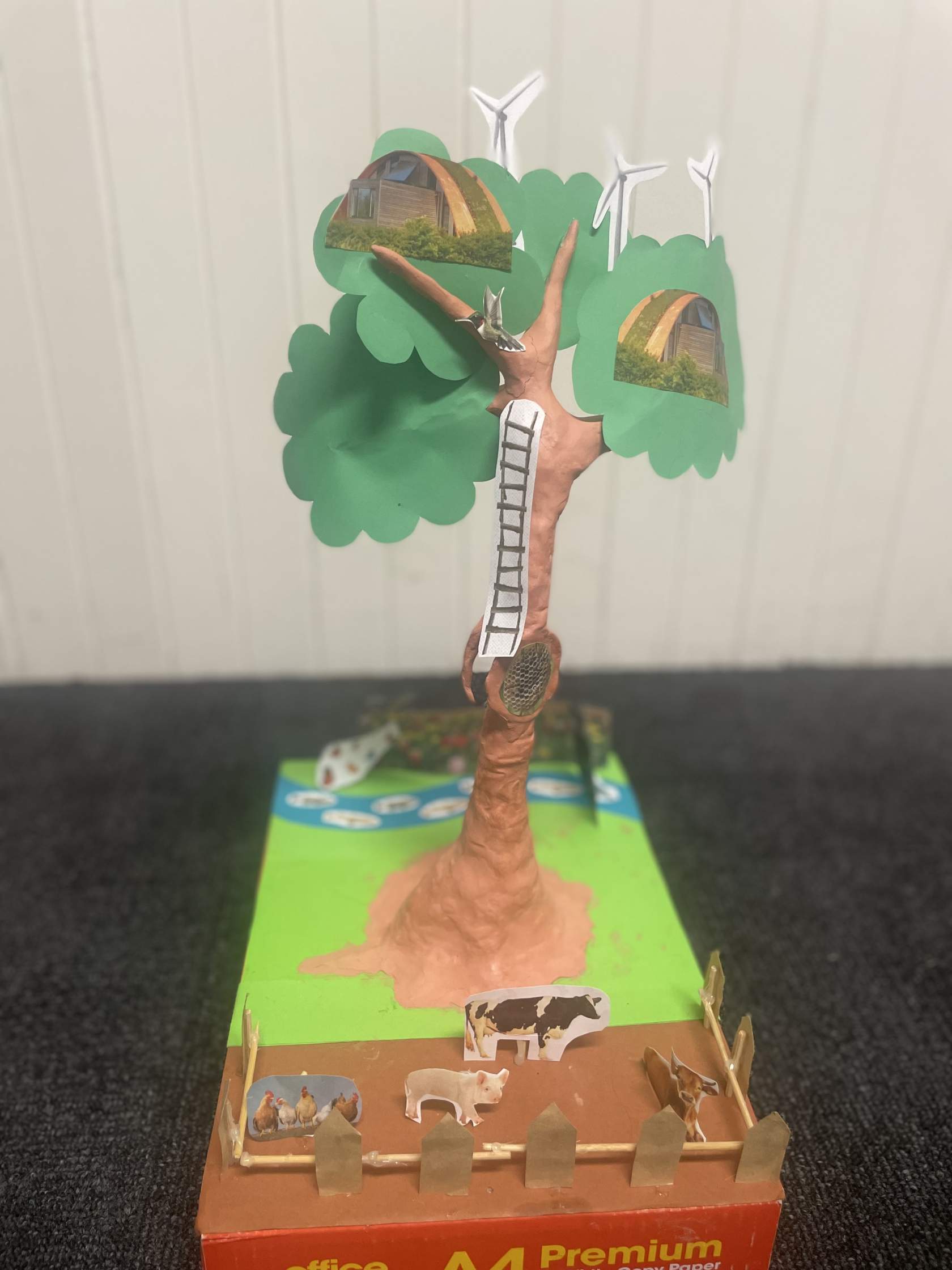
Harper, Jerry, and Xuhui (Box Hill High School Sustainability Club)
A Wild Tomorrow, 2025
Multimedia sculpture.
Harper, Jerry and Xuhui, members of Box Hill HIgh School’s Sustainability Club, share their creative vision of a Wild Tomorrow. An eco-conscious future where humans and domesticated species use sustainable solutions to peacefully co-exist with wildlife - incorporating wild habitat into our own rather than clearing it for our own use.
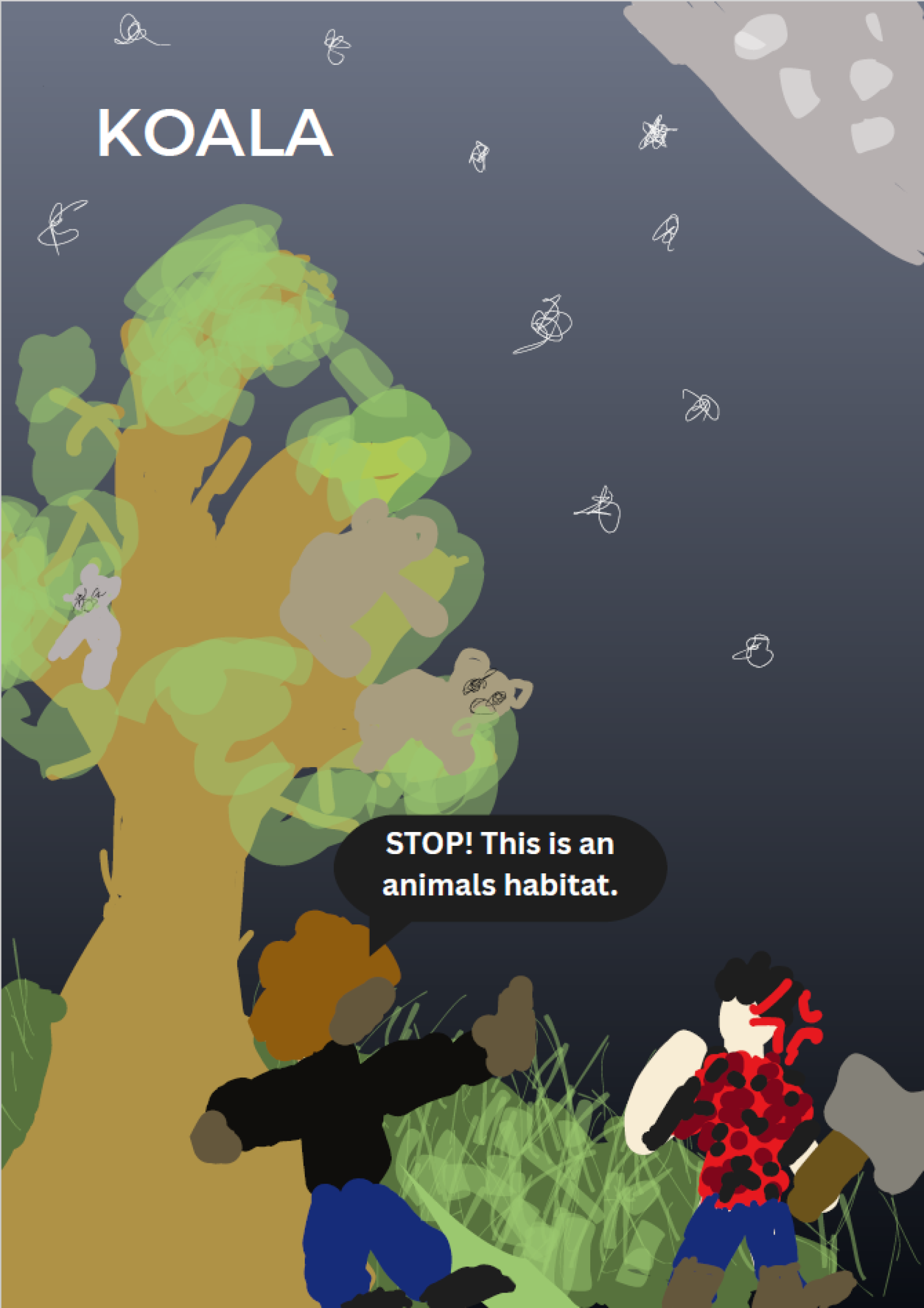
Martin, Year 7
STOP! 2025
Digital artwork
Martin shares a powerful image where the destruction of koala habitat is prevented. Habitat destruction is one of our koalas’ greatest threats.
Martin imagines a future where more is done to protect our native animals’ habitat so wildlife can thrive.
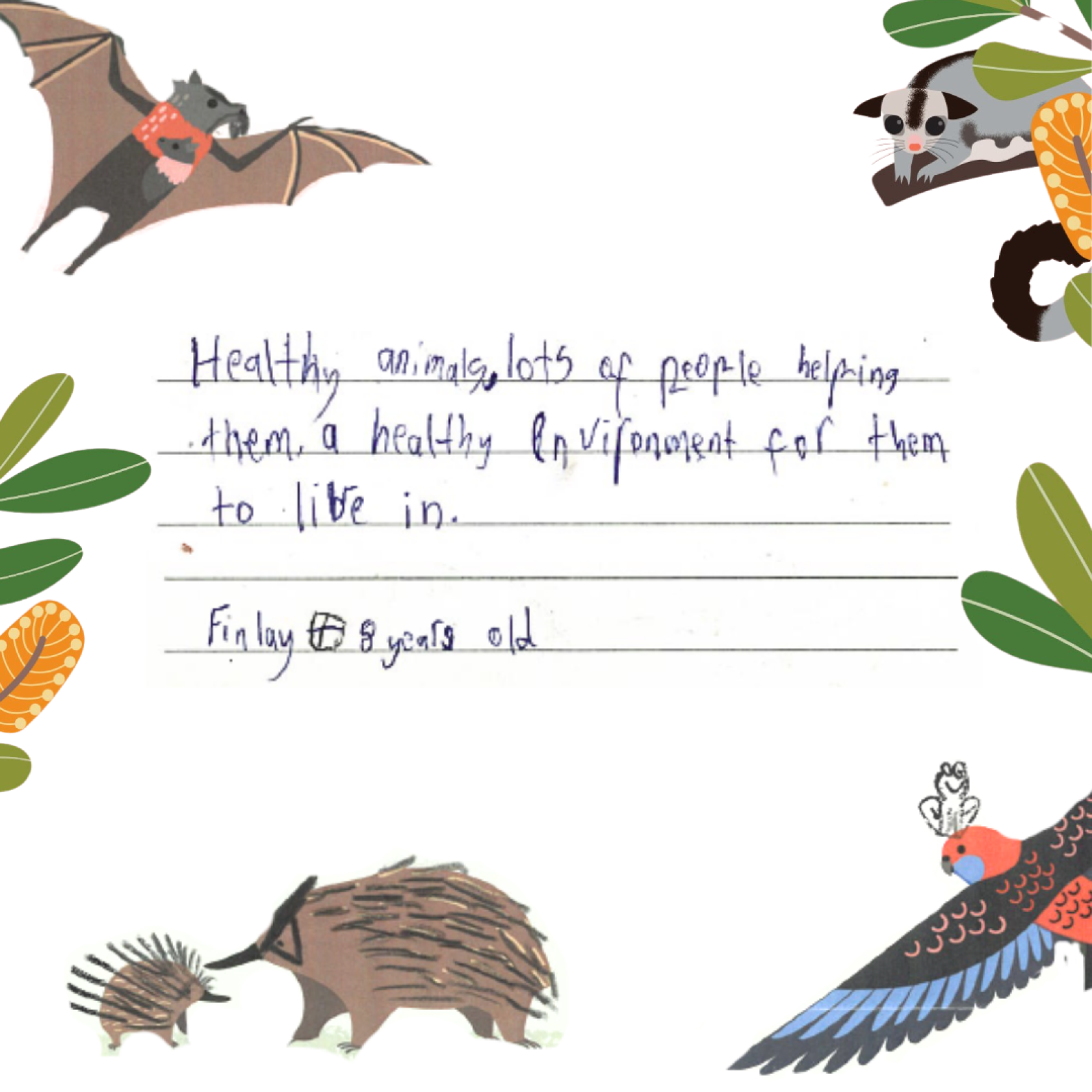
Finlay, age 8.
What is your vision for a Wild Tomorrow? 2025
Featuring original artwork of various native animals peacefully coexisting - pencil on paper.
Finlay shares their thoughts of what they wants to see for a Wild Tomorrow. A hopeful view of a kinder future for our wildlife, where our environment is looked after so wildlife can thrive and continue caring for us and our shared world.
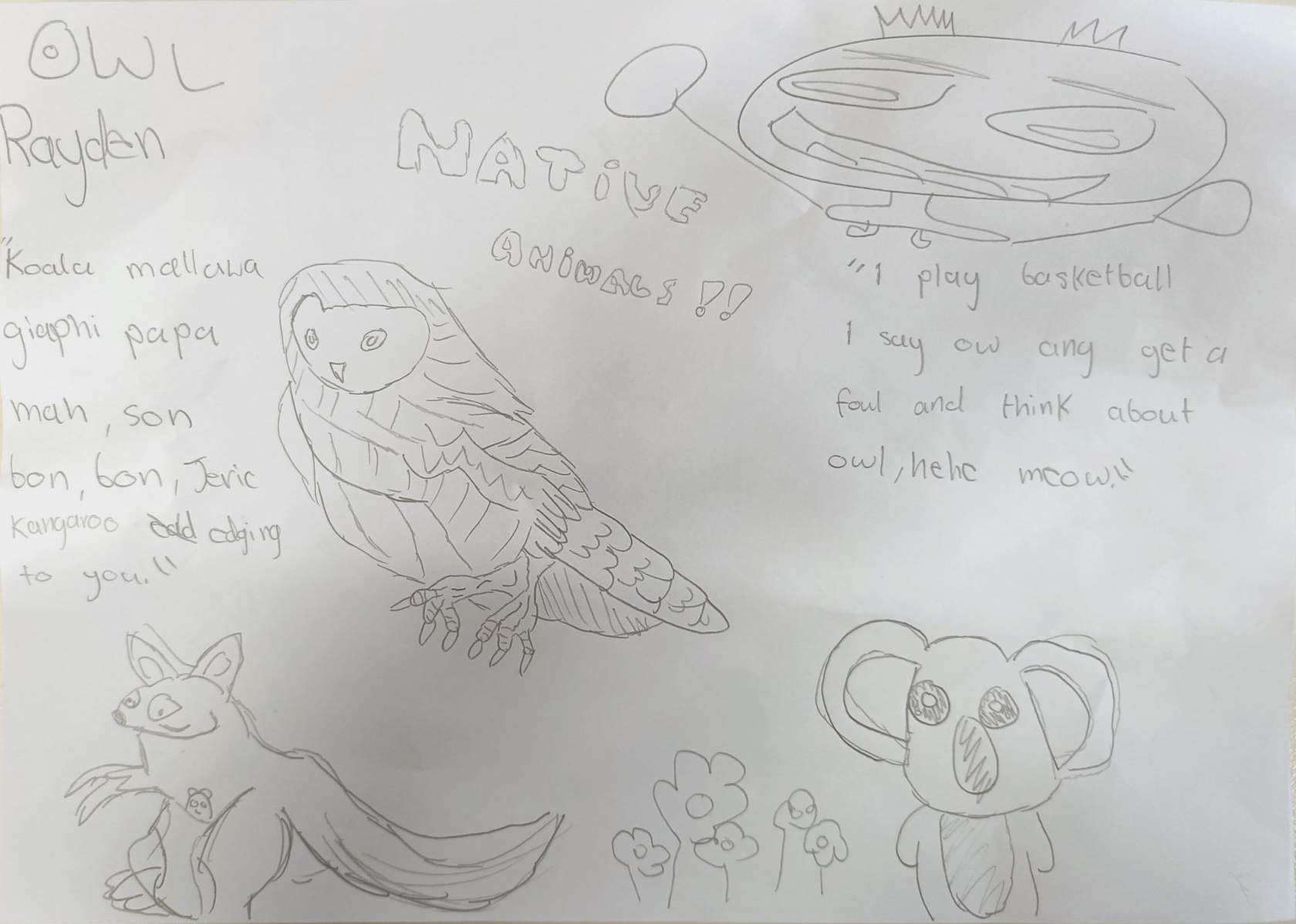
Rayden, Year 7
Native Animals! 2025
Pencil on paper with poem.
Rayden shares an original poem along with sketches of a future where humans co-exist with our native animals. A future where we think about our wildlife more in our day to day life.
Lucas, Year 7.
Don’t Eat Bugs, 2025
Hand-drawn animation.
In Lucas’s light-hearted animation they depict the threatened Gulf snapping turtle. Although endemic to the northern parts of Australia, Lucas’ animation reminds us how a vast array of species across Australia need our help for a safe future.
Victoria is home to three native freshwater species of turtles and our seas will sometimes be visited by sea turtles in warmer months. Our freshwater turtles can sometimes be found wandering through suburbia, so it’s important we are there to help them with hazards such as roads and keep domestic pets safely away.
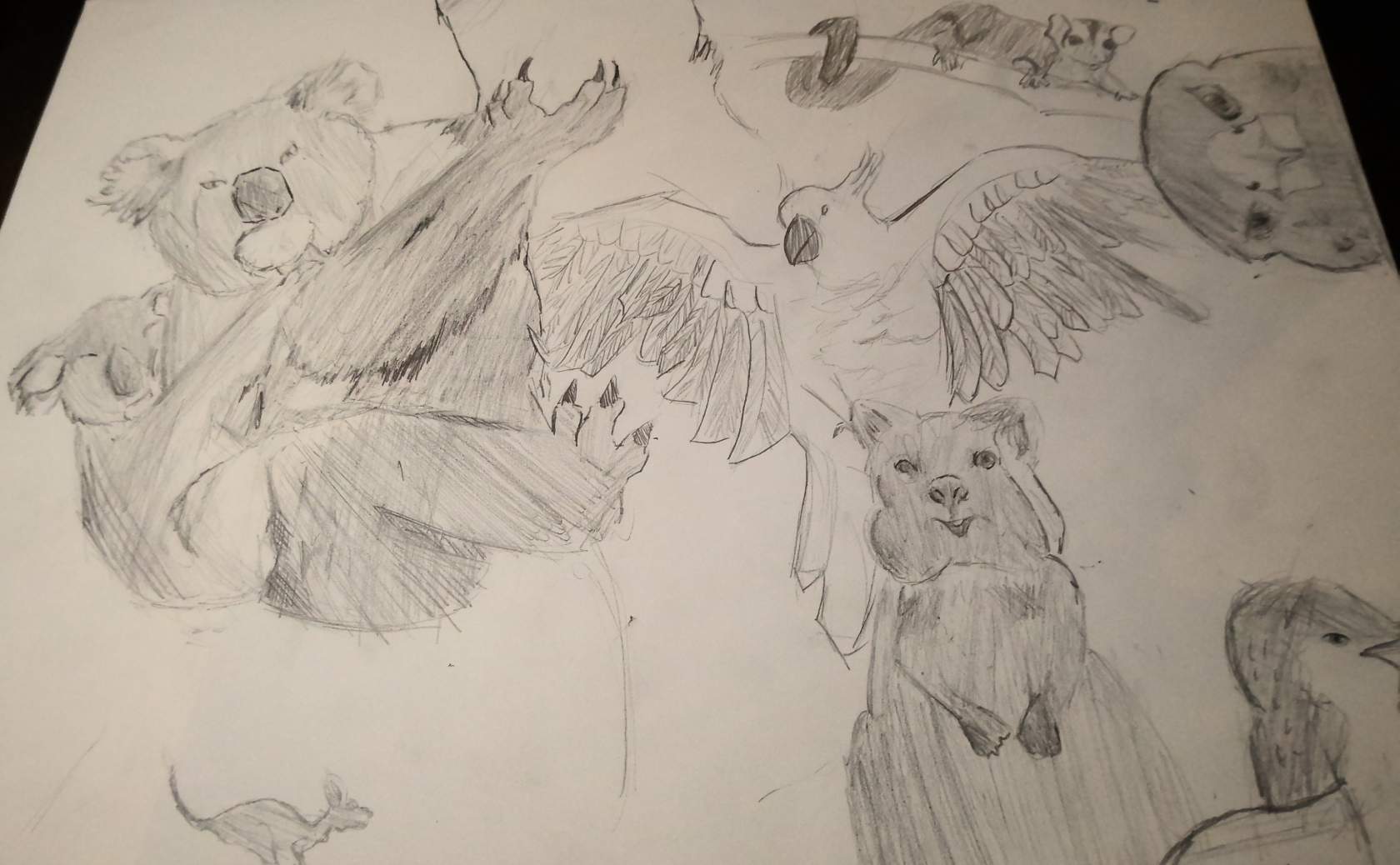
Mason, Year 7
Wild together, 2025
Pencil on paper.
Mason shares beautiful sketches of many different species peacefully existing together. Imagining a world where we can still see all of our wonderful native animals existing together in the wild.
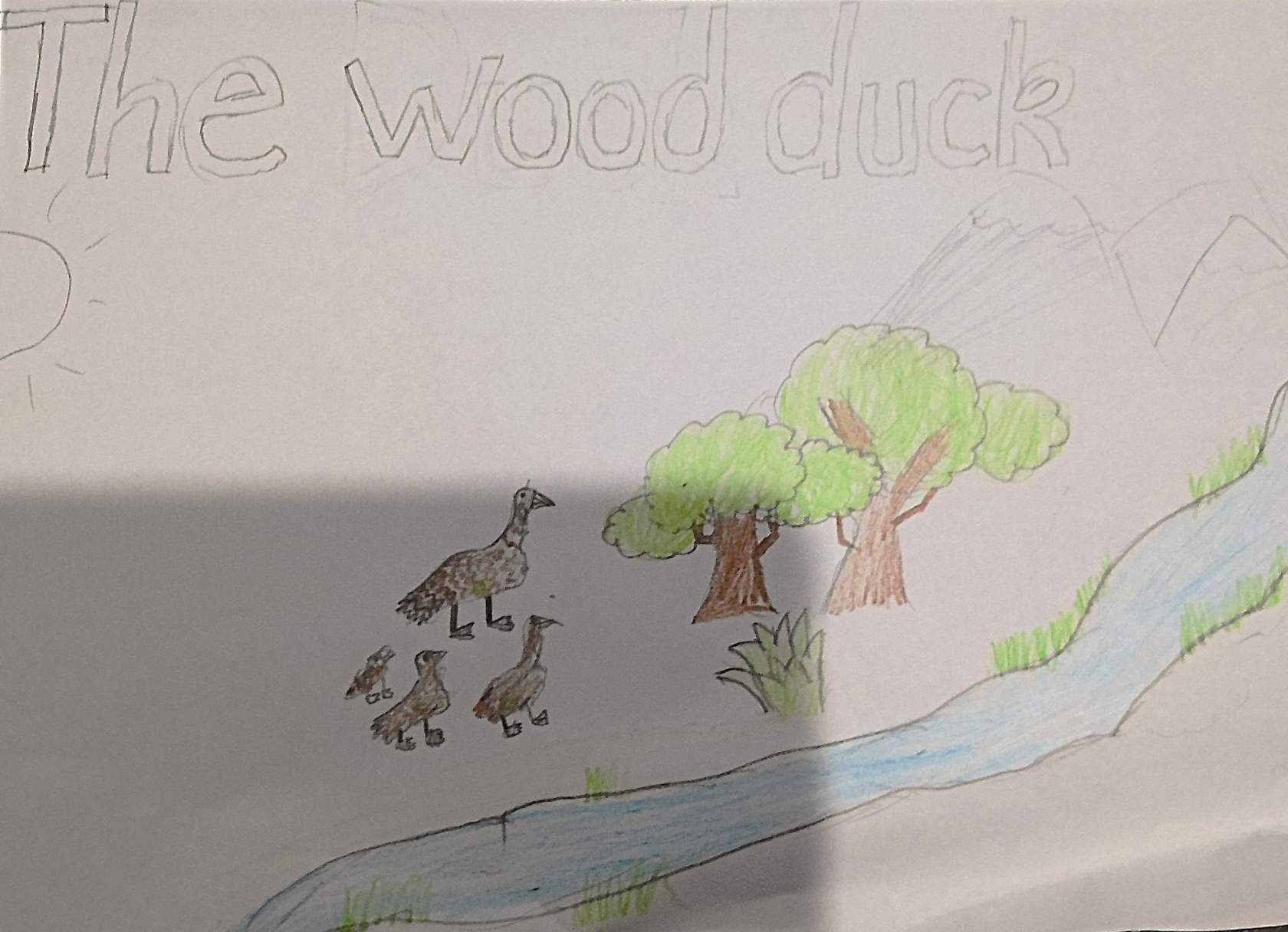
Jordan, Year 7
The Wood Duck, 2025
Colouring pencil on paper
Jordan shares a wild vision for tomorrow where our precious native wood ducks have a safe and wild habitat to raise their young. In an increasing urbanised world, our ducks face more and more challenges - especially when it comes to safely rasing their ducklings.
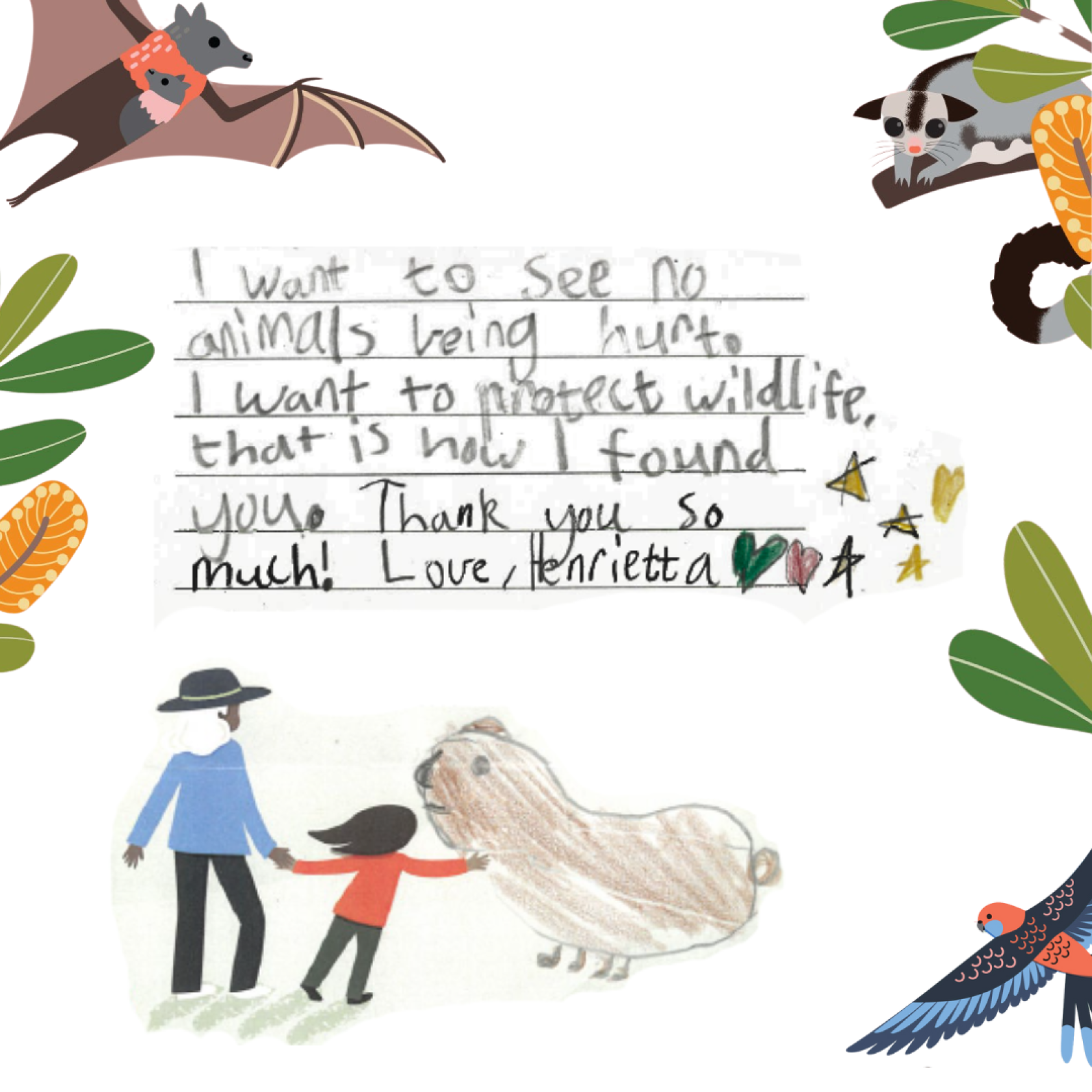
Henrietta, age unknown.
What is your vision for a Wild Tomorrow? 2025
Featuring original artwork of a wombat - colouring pencil on paper.
Henrietta shares her thoughts of what she wants to see for a Wild Tomorrow. A powerful of view of a future where wildlife receives the care it needs and more is done to prevent animals from needing our help.
